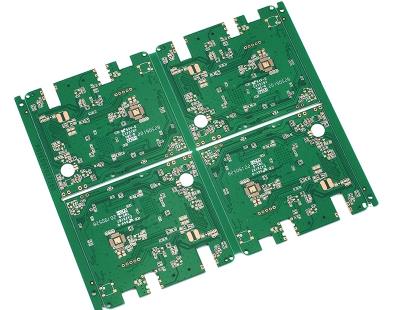PCB copy board, that is, under the premise that there are physical objects of electronic products and circuit boards, reverse analysis of the circuit boards by reverse research and development techniques, and the original product PCB files, bill of materials (BOM) files, and schematic files Perform a 1:1 restoration of technical documents and PCB silk screen production documents, and then use these technical documents and production documents to perform PCB manufacturing, component welding, flying probe testing, circuit board debugging, and complete the complete copy of the original circuit board template.
The single-phase contact voltage regulator is a dry, self-cooling, self-coupling contact voltage regulator. It has a wide range of applications in voltage regulation, temperature control, speed regulation, dimming, power control and other places. product.
Scope of application: It can be widely used in industrial (such as metallurgy, chemical industry, instrumentation, electromechanical manufacturing, light industry, etc.), scientific experiments, public facilities, and household appliances to achieve voltage regulation, temperature control, dimming, power control and other purposes. (Digital display and pointer) Special requirements can be customized.
Precautions for use:

This series of voltage regulators should be used indoors, and the normal use conditions are:
1. Ambient temperature: -15 degree Celsius~+45 degree Celsius
2. The altitude does not exceed 1000m
3. Relatively moderate: ≤90%
4. Power supply voltage waveform: the power supply voltage waveform is similar to sine
5. There should be no gas, steam, chemical deposits, dust, dirt and other explosive and aggressive media that seriously affect the insulation of the voltage regulator; the installation place should be free of severe vibration or turbulence.
Installation, use and maintenance:
1. The power supply voltage should conform to the input voltage on the nameplate of the voltage regulator;
2. The voltage regulator must be well grounded to ensure safety;
3. When using, always pay attention that the output current does not exceed the rated value, otherwise the life of the voltage regulator will be reduced or even burned;
4. Rotate the hand wheel slowly and evenly during use to avoid damage to the brush or sparks;
5. The use of the voltage regulator should be checked frequently. If the brush is found to be excessively worn or defective, it should be replaced with a brush of the same specification in time. The brush bottom surface is smooth and in good contact before use;
6. The surface of the coil and the brush should always be kept clean, otherwise it is easy to increase the spark and burn the surface of the coil. If you find that there are black spots on the surface of the coil, you can wipe it off with cotton yarn and alcohol until the spots on the surface are removed;
7. Connected from the power supply to the voltage regulator, the wires and the wire terminals of the voltage regulator connected to the load should be in good contact and can pass the rated current of the voltage regulator;
8. Do not use the handwheel when moving the regulator, but use the handle or lift the entire product to move;
9. When the voltage regulator needs to be installed horizontally on a large panel or vertically installed on other bases, it can be fixed by the mounting holes of the base of the voltage regulator;
10. The regulator is always protected and cleaned. Water droplets, oil stains, etc. are not allowed to fall into the regulator. The regulator must be powered off regularly to remove the accumulated dust.
The above are the precautions for the development of single-phase voltage regulator PCB copy board.